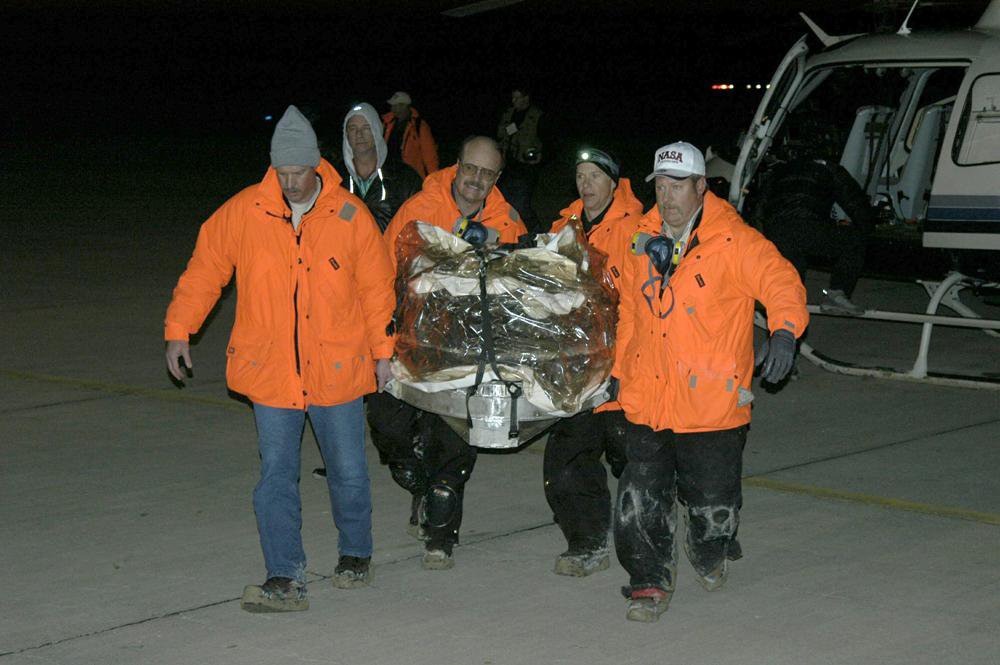NASA’s Stardust mission to Comet Wild 2 has revealed its secrets very slowly. They’re finally coming together, however, and the results are showing that the outer Solar System in its early days was not the simple place previously thought. How one comet came to have dust from widely separated parts of the early Solar System remains unanswered, however.
Long before Rosetta’s Philae landed on Comet 67P/Churyumov-Gerasimenko or space agencies brought back samples from asteroids, NASA sent a mission to collect pieces of Comet Wild 2. After a 1974 encounter with Jupiter, this once-distant comet follows an orbit more typical of asteroids, between Mars and Jupiter. The mission is so old it launched last century (1999), returning its sample to Earth in 2006.
Back then we lacked the confidence to try and land on a comet, let alone take off again with a sample in tow. Instead, NASA took advantage of the distinguishing feature of comets: they produce tails as they approach the Sun containing gas that has boiled off their surface, and dust that has been carried with it.
The Stardust mission put a gel-covered plate shaped like a tennis racket into Comet Wild 2’s tail and brought home whatever stuck. Although preliminary analysis was published not long after the first samples were analyzed, a more detailed picture is now emerging.
“Comet Wild 2 contains things we’ve never seen in meteorites, like unusual carbon-iron assemblages, and the precursors to igneous spherules that make up the most common type of meteorite,” study author Dr Ryan Ogliore of Washington University in St Louis said in a statement. “And all of these objects have been exquisitely preserved within Wild 2. The comet was a witness to the events that shaped the solar system into what we see today.”
The reason it has taken so long to reveal this is that the samples were around a million tiny grains trapped in the aerogel. Identifying the bits of the comet was so hard that NASA had to call on thousands of volunteers who looked at microscope images of the collection plate to spot where the bits had landed.
“Nearly every Wild 2 particle is unique and has a different story to tell,” Ogliore said. “It is a time-consuming process to extract and analyze these grains. But the science payoff is enormous.”

The sample return from the Stardust Mission, having been wrapped for protection, arriving at U.S. Air Force Utah Test and Training Range in 2006
Image Credit: NASA
Although the majority of the grains are still unstudied, many have been investigated using techniques that were not available when the mission occurred.
These reveal that, instead of being composed of dust unaltered from the supernova that seeded the early Solar System with heavier elements, the comet had a mix of sources. Along with small amounts of this interstellar dust, the samples contain traces from many parts of the cloud that became planets and asteroids after the Sun’s formation. This includes material from both sides of the gap Jupiter created in the cloud. “Comet Wild 2 does not exist on a continuum with known asteroids,” Ogliore writes in the paper.
This was a surprise, since Wild 2 probably formed beyond the orbit of Neptune, in the vast spaces where little was thought to have happened.
Once these pieces became part of Comet Wild 2, they experienced almost no further processing, being quite literally put on ice. Being only around 3 kilometers (2 miles) wide, the comet also didn’t have the sort of geological processes that would transform the grains through great pressure or reactive chemistry.
“The Stardust samples…contain a record of the deep past covering billions of miles,” Ogliore said. “After 18 years of interrogating this comet, we have a much better view of the solar system’s dynamic formative years.”
How typical Comet Wild 2 is remains unknown. Perhaps many comets were like this, but it’s also possible that by sheer chance the first comet we sampled was one of the most interesting.
The analysis is published in the journal Geochemistry.
An earlier version of this article was published in January 2024.
Source Link: Comet Wild 2's Surprisingly Varied Dust Reveals Our Solar System's Early History